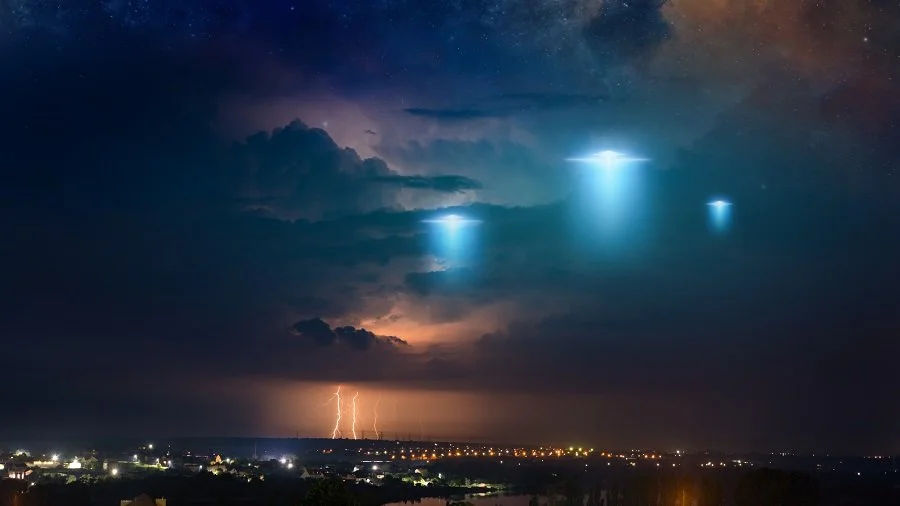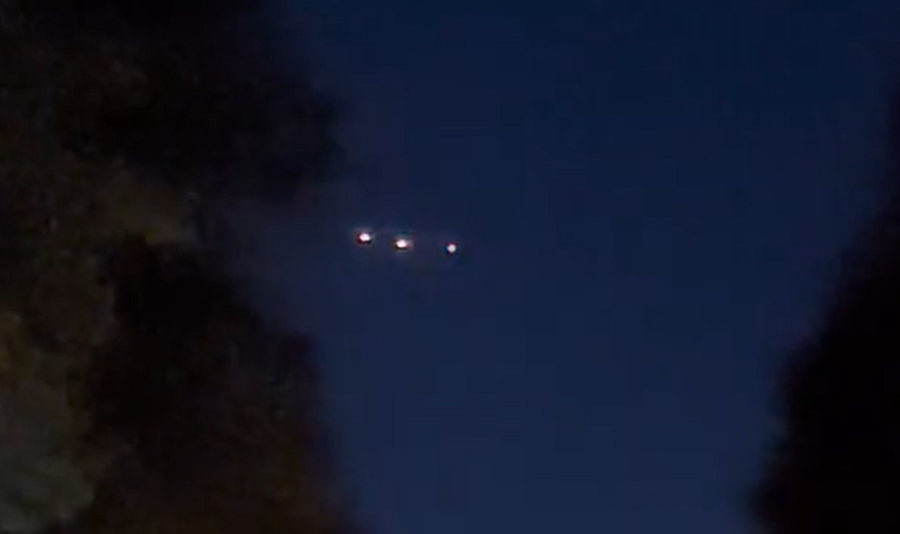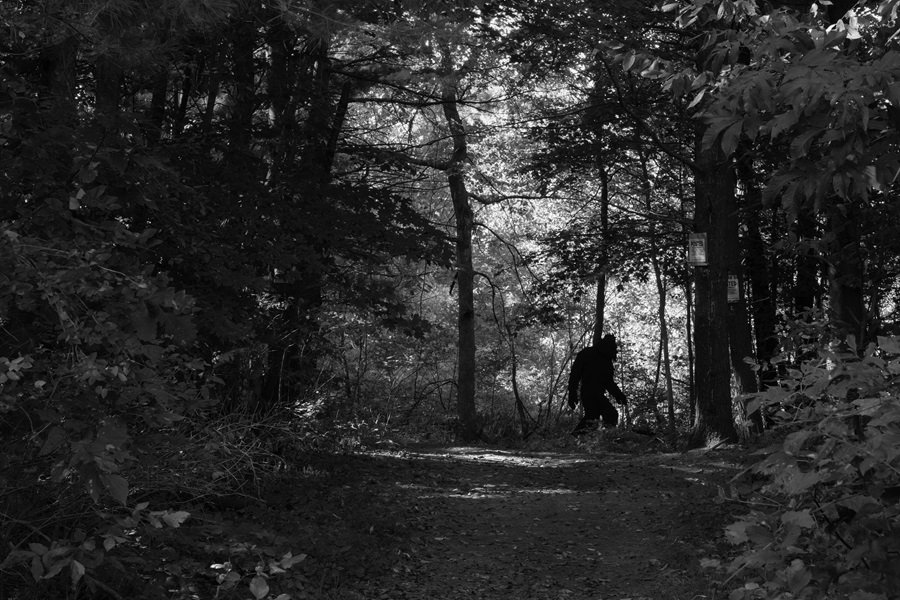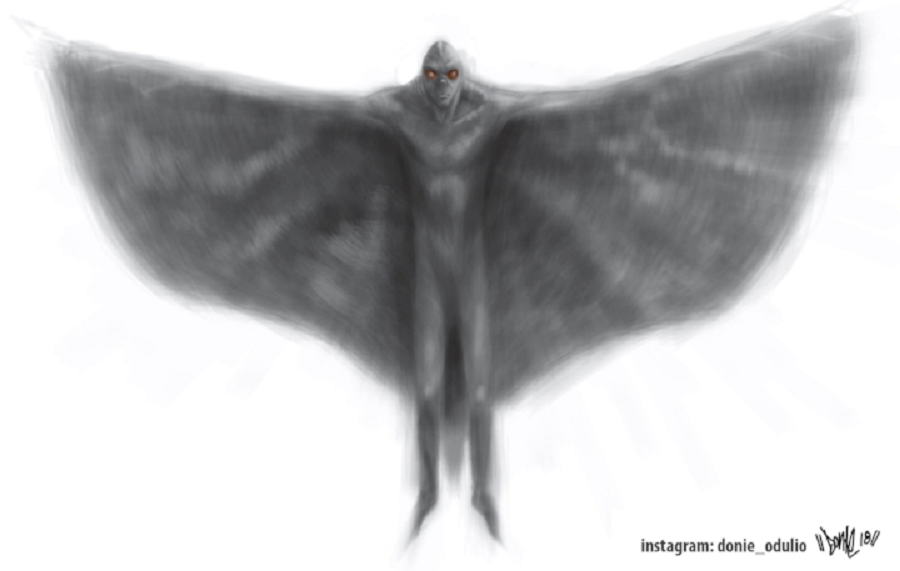Congress Holds First UFO Hearing Since 1966 and 'Project Blue Book'
A still image from the “pyramid” craft video presented during the congressional hearing. (Ryan Sprague / YouTube)
The House Intelligence subcommittee held the first hearing on UFOs last Tuesday since the days of Project Blue Book—a government study on UFOs that ran from 1952 to 1969—followed by a classified session to discuss any related matters sensitive to national security.
The congressional hearing gave lawmakers the opportunity to question the Pentagon regarding the issue of unidentified aerial phenomena (UAP)—the current government nomenclature for UFOs—and for government officials to explain their current position and outline plans to investigate the issue further.
Representing the Pentagon during the hearing were Scott Bray, the Deputy Director of Naval Intelligence, and Ronald Moultrie, the Under Secretary of Defense for Intelligence & Security.
Presentations provided by the Pentagon included two videos, the first of which was a short video from 2019 featuring a small, spherical object zooming past the window of an F/A-18 fighter jet. The object in the video appeared to be the same as that published as a still image by Mystery Wire in 2021. According to Bray, the object remains unidentified, although skeptics have speculated for the last two years that it might be a balloon.
The second video featured a July 2019 incident involving multiple "pyramid-shaped" craft recorded by an infrared camera from the deck of the USS Russell. That video was shared by filmmaker Jeremy Corbell a few days after the image published by Mystery Wire. Critics of the “pyramid” craft video have pointed out that the aperture of many cameras will make out-of-focus lights appear to be triangular, and the flashing lights are consistent with a mundane aircraft; suspicions confirmed by Bray.
“This time, other U.S. Navy assets also observed unmanned aerial systems nearby, and we’re now reasonably confident that these triangles correlate to unmanned aerial systems in the air,” he said during the hearing. "I don't mean to suggest that everything that we observe is identifiable, but this is a great example of how it takes considerable effort to understand what we're seeing in the examples that we are able to collect."
There were few mentions of extraterrestrials during the hearing—although the Pentagon is especially interested in reports which include unusual flight characteristics, such as incredible speed, transmedium capabilities, and undetectable means of propulsion—and Bray insisted that any conclusions reached will be driven by the data.
“We’ll go wherever the data takes us,” he said. “Again, we’ve made no assumptions about what this is or isn’t.”
However, his stance on the evidence in favor of the extraterrestrial hypothesis was clear.
“We have no material. We have detected no emanations within the UAP task force that would suggest it’s anything non-terrestrial in origin,” Bray said of the UFO phenomenon.
Confidence in the investigation has flagged in Congress since the release last year of the Office of the Director of National Intelligence’s much anticipated preliminary assessment report on UFOs. Many in the intelligence community were critical of the report due to what they saw as its failure to offer any concrete explanations for most of the incidents analyzed, especially in light of concerns surrounding secret Russian or Chinese technology.
Regardless of the explanation, lawmakers appear highly motivated to identify any unusual craft entering U.S. airspace.
“When we spot something we don’t understand or can’t identify in our airspace, it’s the job of those we entrust with our national security to investigate and report back,” Intelligence Committee chairman Adam Schiff (D-Calif.) said.
Representative André Carson (D-Ind.) was similarly critical of official attempts to investigate UFOs.
"Unidentified Aerial Phenomena are a potential national security threat. And they need to be treated that way,” he said. "For too long, the stigma associated with UAPs has gotten in the way of good intelligence analysis. Pilots avoided reporting, or were laughed at when they did. [Department of Defense] officials relegated the issue to the back room, or swept it under the rug entirely, fearful of a skeptical national security community. Today, we know better. UAPs are unexplained, it's true. But they are real. They need to be investigated. And any threats they pose need to be mitigated."
Both Moultrie and Bray said that there is a need to balance transparency with the protection of sensitive intelligence information, but assured Congress that the Pentagon was taking the investigation seriously.
“We have our inquisitiveness; we have our questions,” Moultrie said. “We want to know what’s out there as much as you want to know what’s out there.”
"We also understand that there has been a cultural stigma surrounding UAP," he continued. "Our goal is to eliminate the stigma by fully incorporating our operators and mission personnel into a standardized data gathering process. Our goal is to strike that delicate balance: one that enables us to maintain the public's trust while preserving those capabilities that are vital to the support of our service personnel."
Bray also explained that the "Navy and Air Force crews now have step-by-step procedures for reporting on a UAP on their kneeboard in the cockpit," which has led to more reporting.
Despite those assurances, representative Tim Burchett (R-Tenn.), who is not a member of the Intelligence Committee but sat in on the hearing, expressed his disbelief in Bray and Moultrie’s testimony.
“We just got hosed. On some level I think it is a cover-up,” he said. “I have a T-shirt I sell on my website. It says, ‘More people believe in UFOs than believe in Congress.’”
Congressional interest in UFOs has increased dramatically since the existence of the Pentagon’s Advanced Aviation Threat Identification Program (AATIP)—which reportedly ran from 2007 until 2012—was publicly revealed in 2017.
Interest continued to swell and, in 2019, several senators—including Sen. Mark Warner (D-Va.), the then vice chairman of the Senate Intelligence Committee—received briefings on encounters between Navy pilots and UFOs.
Then, in 2020, the Senate Intelligence Committee, led at the time by Senator Marco Rubio (R-Fla.), included a directive in their Intelligence Authorization Act for Fiscal Year 2021 ordering the Director of National Intelligence (DNI)—in consultation with the Secretary of Defense—to create a report regarding “unidentified aerial phenomena.” That bill led to the creation of the Unidentified Aerial Phenomena Task Force (UAPTF), the group responsible for creating the preliminary assessment report mentioned above.
Following the report, the Pentagon promised to overhaul the task force responsible for investigating UFOs, naming it the Airborne Object Identification and Management Synchronization Group, but has so far failed to name a director.
Recent government interest in UFOs has divided the UFO community between those longing for disclosure and those distrustful of anything the government has to say on the subject, although this week’s hearing has at least seemingly united the community in their criticism of it. Viewers were critical of the Pentagon’s dismissal of the extraterrestrial hypothesis, their hyper focus on physical craft versus many of the “high strangeness” phenomena said to accompany sightings of UFOs, and their seeming ignorance of previous government programs to investigate the phenomenon.
At one point during the proceedings, when asked about previous government programs, Moultrie seemed not to be aware of Projects Sign and Grudge, both of which preceded Project Blue Book.
Whether or not the Pentagon expands the scope of its investigation with increased reporting remains to be seen.
To report your own encounter with the impossible, reach out to us directly at the Singular Fortean Society through our contact page.
If you enjoyed this article and would like to support the Singular Fortean Society, please consider becoming an official member by signing up through our Patreon page—membership includes a ton of extra content and behind-the-scenes access to the Society’s inner workings.






















